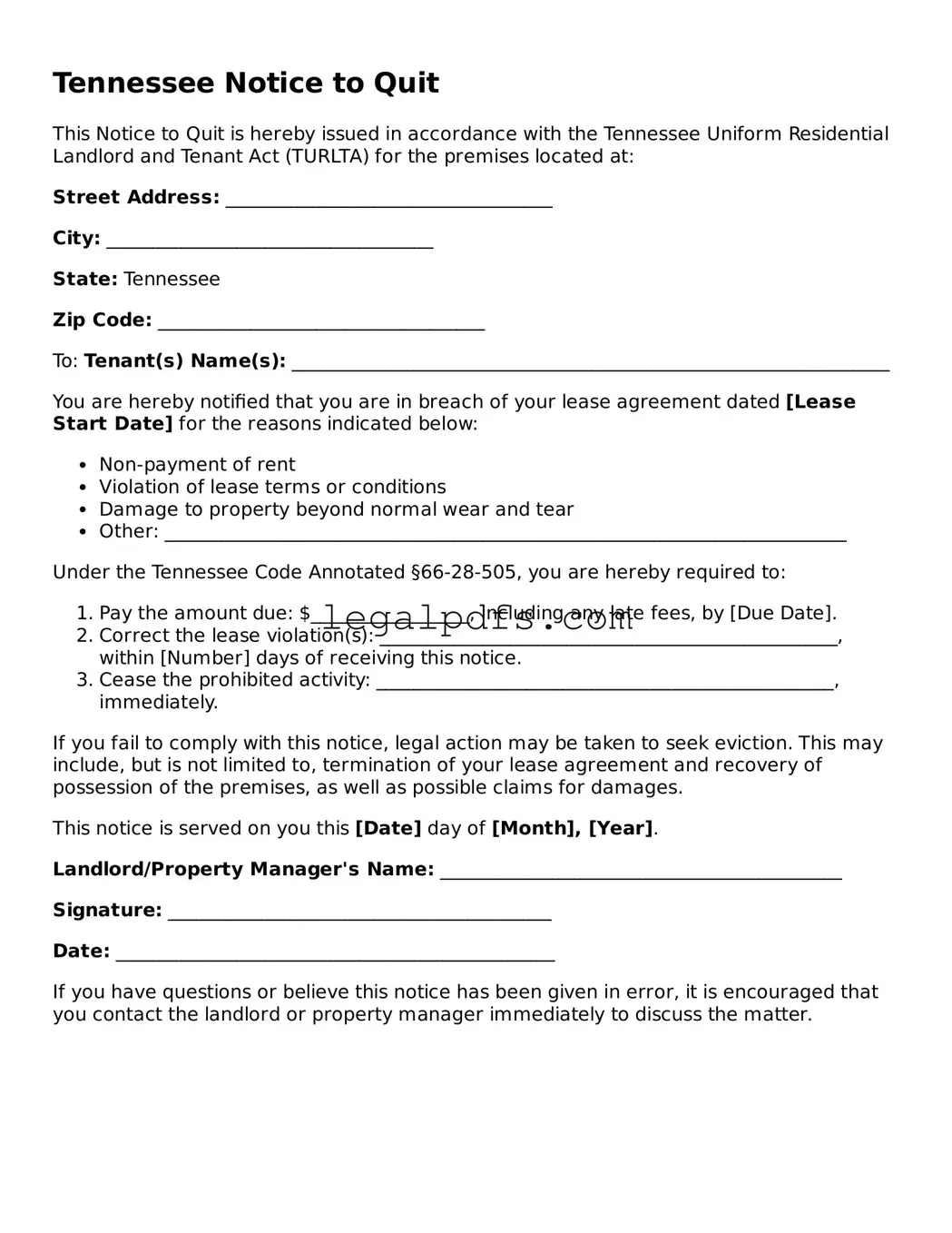What is a Tennessee Notice to Quit form?
A Tennessee Notice to Quit form is a legal document used by landlords to notify a tenant that they must either rectify a violation of their lease agreement or vacate the premises by a specified date. This notice can be related to non-payment of rent, breach of lease terms, or other lease violations.
How many days' notice is required for a Notice to Quit in Tennessee?
The required notice period in Tennessee varies by the type of violation. For non-payment of rent, landlords must give at least 14 days' notice. For other lease violations, the notice period may differ based on the specific terms of the lease agreement and the nature of the violation.
Can a Tennessee Notice to Quit be delivered electronically?
Whether a Notice to Quit can be delivered electronically depends on the lease agreement and state laws. It's advisable to consult legal counsel or the terms of the lease to determine the acceptable methods of delivery. Typically, a more conservative approach, such as hand-delivery or certified mail, is recommended to ensure receipt of the notice.
Is a Tennessee Notice to Quit required for all lease violations?
Yes, in Tennessee, a landlord must typically provide a Notice to Quit for lease violations before initiating eviction proceedings. This serves as a formal opportunity for the tenant to resolve the issue. However, the specific requirements may vary depending on the severity and type of violation.
What information needs to be included in a Tennessee Notice to Quit?
A Tennessee Notice to Quit must include the tenant's name, the rental property address, a detailed description of the lease violation, the date by which the tenant must rectify the violation or vacate the property, and the landlord's signature.
What happens if a tenant does not comply with a Tennessee Notice to Quit?
If a tenant fails to address the violation or vacate the property by the specified date in the Notice to Quit, the landlord may proceed with filing an eviction lawsuit against the tenant. This legal action seeks to obtain a court order for the tenant's removal.
Can a tenant dispute a Tennessee Notice to Quit?
Yes, a tenant can dispute a Notice to Quit if they believe it was issued in error or without just cause. They may present their case in court during the eviction proceedings, providing evidence to support their claim.
Is there a difference between a Notice to Pay Rent or Quit and a Notice to Cure or Quit in Tennessee?
Yes. A Notice to Pay Rent or Quit is specifically issued for non-payment of rent and typically allows for a shorter rectification period. In contrast, a Notice to Cure or Quit is issued for other lease violations and the timeframe to address the issue may be longer, depending on the lease terms and the nature of the violation.
How can a landlord ensure their Tennessee Notice to Quit is legally binding?
To ensure a Tennessee Notice to Quit is legally binding, landlords should follow state guidelines on notice requirements, include all necessary information in the notice, and deliver it to the tenant through one of the prescribed methods. Consulting with legal counsel may also help verify compliance with state laws.
Where can I find a template for a Tennessee Notice to Quit?
Templates for a Tennessee Notice to Quit can be found through legal services websites, state government resources, or by consulting with a legal professional. It is important to choose a template that is up-to-date and complies with current Tennessee laws.
